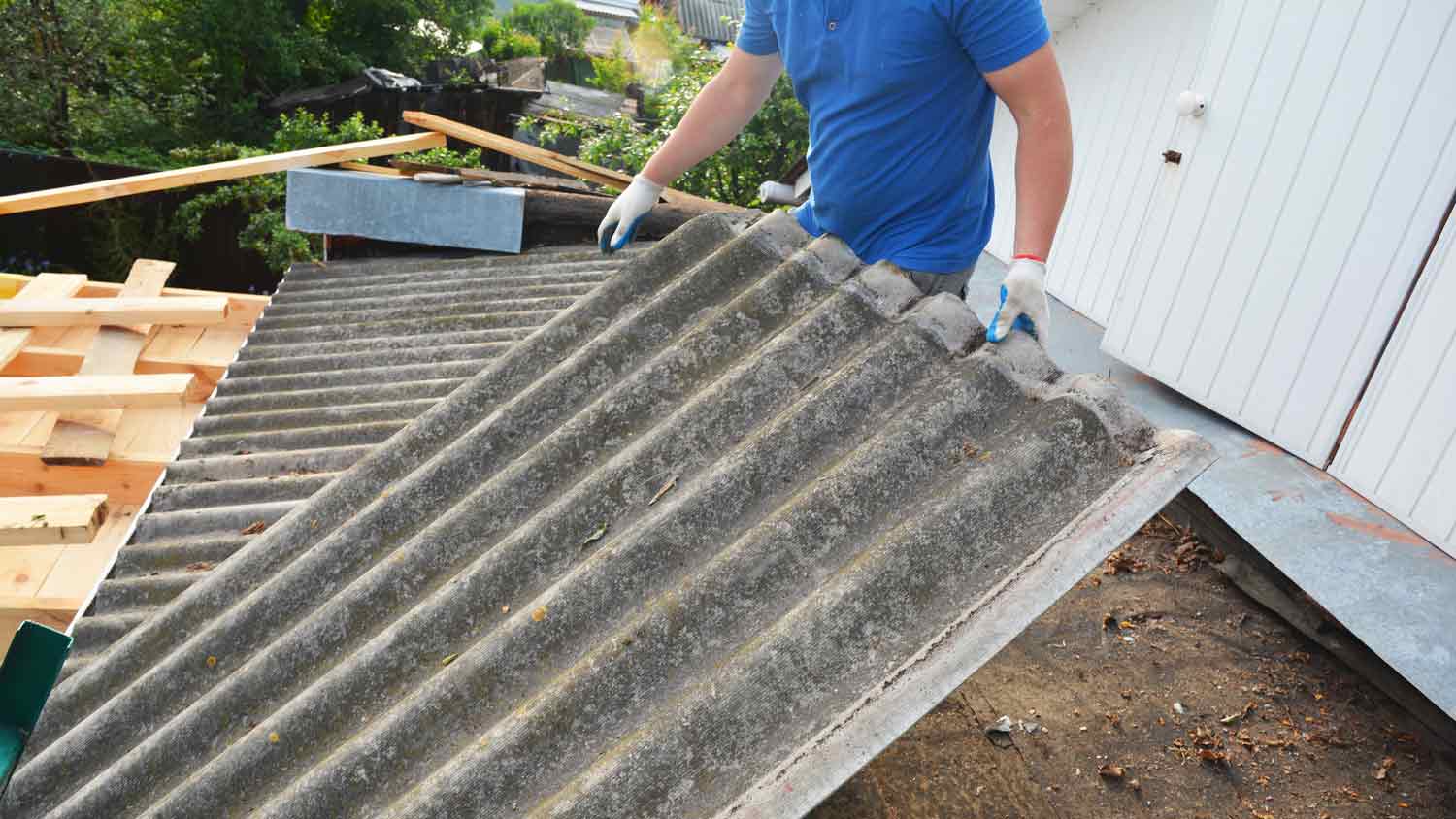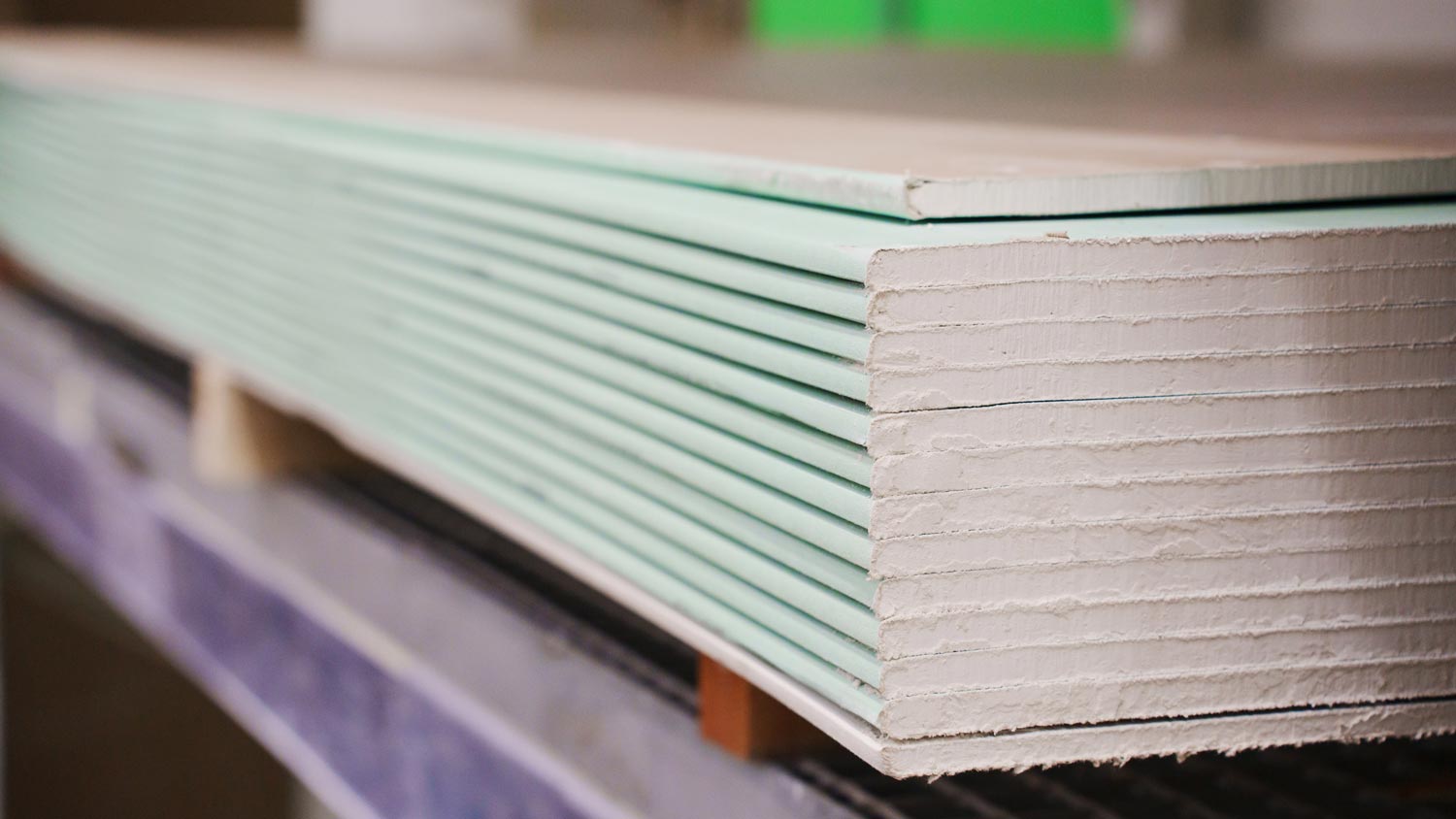
Discover the cost to replace asbestos siding, including key cost factors, and tips to help homeowners budget for safe and effective siding replacement.
Is asbestos lurking in your charming abode?


Asbestos was popular in homes between the 1940s and 1970s.
By the late 1980s, asbestos use was discontinued.
Encapsulation or abatement are the two asbestos treatment options.
If you own a home built before the 1980s, you may wonder: when was asbestos used in homes? Asbestos was once hailed as a miracle material, widely used in construction for its fire-resistant and insulating properties. Decades later, we know the grave dangers it poses to our health. Here's what you need to know about asbestos use and whether it may be lurking within your walls, floors, or ceilings.
Asbestos is a naturally occurring mineral known for its durability and resistance to heat, fire, and chemicals. This made asbestos desirable for industrial uses, including construction materials. Aside from its home benefits, asbestos was a go-to material as a relatively low-cost option.
Asbestos was commonly used in materials such as insulation, roofing shingles, vinyl flooring, and textured paints like the popular popcorn ceilings. Its widespread use was driven by the need for durable, safe construction materials that could withstand high temperatures and prevent fires. Unfortunately, as asbestos breaks down over time or becomes damaged, it releases tiny fibers into the air. When inhaled, these fibers can lodge in the lungs and cause serious health problems, including mesothelioma, lung cancer, and asbestosis.
Asbestos use in home construction started in the 1930s and peaked between the 1940s and 1970s. During this time, builders relied on asbestos-containing materials (ACMs). Its popularity continued into the early 1980s, but concerns about the health risks of asbestos exposure began to grow in the 1970s. By the late 1980s, the use of asbestos in home construction had significantly declined, though it was not entirely banned in the United States.
Although asbestos is no longer used in new home construction, many homes built before the 1980s may still contain ACMs. If your house was built during or before that period, there’s a chance that asbestos may be present in some of its materials. It’s important to note that asbestos is most dangerous when it’s disturbed, such as during renovations or repairs, which can lead the harmful fibers to become airborne.
Older homes are more likely to contain materials with asbestos, and data from Angi customers shows that 78.1% of homes that needed asbestos removal were built before 1978. Only 12.4% of homes needing asbestos removal were built after 1978. If you have an older home, preventative asbestos testing by a professional abatement company is a smart, safe choice.

Identifying asbestos in a home can be tricky because it was used in products similar in appearance to modern, non-asbestos materials. You won't know what asbestos looks like in insulation or other areas. Some common areas where asbestos is found in homes include:
Insulation: Asbestos was commonly used to insulate attics and walls, especially in homes built between the 1930s and 1950s.
Roofing and Siding: Asbestos was used in cement-based roofing shingles and siding panels.
Flooring: If you have vinyl tiles installed before the 1980s, there’s a chance they contain asbestos.
Textured Ceilings: Popcorn ceilings, popular in homes from the 1950s to the 1980s, may contain asbestos.
Piping and HVAC Systems: Asbestos was used as an insulating material around pipes and ductwork, especially in basements or boiler rooms.
Asbestos is odorless—so don't rely on your nose to tip you off about asbestos in your home. Asbestos fibers are too tiny for humans to detect their smell, so even large amounts of asbestos will lack a scent. The only way to know if your home has asbestos is to have a pro test for it.

If you think your home might have asbestos, take the right steps to keep you and your family safe. The most important thing to remember is not to disturb anything that could contain asbestos. It only becomes dangerous when it’s damaged or disturbed, so leaving it alone is the safest choice.
Your first step should be to hire a local asbestos professional to inspect your home and take samples for testing. They’ll confirm whether asbestos is present and help you figure out the best course of action.
If asbestos is found, you have two options: encapsulation or removal. Encapsulation seals the asbestos-containing material to prevent fibers from becoming airborne. This is a good option if the material is in good shape and unlikely to be disturbed. Removal, also known as abatement, is the best choice if the asbestos is damaged or if you’re planning a renovation that could disturb it.
Abatement should always be handled by a licensed asbestos removal professional who has the right tools and expertise. There are strict federal and state regulations for safely removing and disposing of asbestos, and contractors are required to follow them.
From average costs to expert advice, get all the answers you need to get your job done.

Discover the cost to replace asbestos siding, including key cost factors, and tips to help homeowners budget for safe and effective siding replacement.

Get clear answers on asbestos tile removal cost, including average prices, cost factors, and tips to save money on safe, professional removal.

Discover the cost to remove asbestos siding, including average prices, key cost factors, and tips to help homeowners plan a safe and budget-friendly project.

Your home may contain asbestos, but don't panic. Learn where asbestos is found, and what you can do about it to protect yourself.

What does asbestos in drywall look like? You can’t see it without a microscope, but these common signs may mean asbestos is present.

What are asbestos floor tiles and how can you tell if they’re in your home? Learn how to identify asbestos floor tiles, risk, and removal.